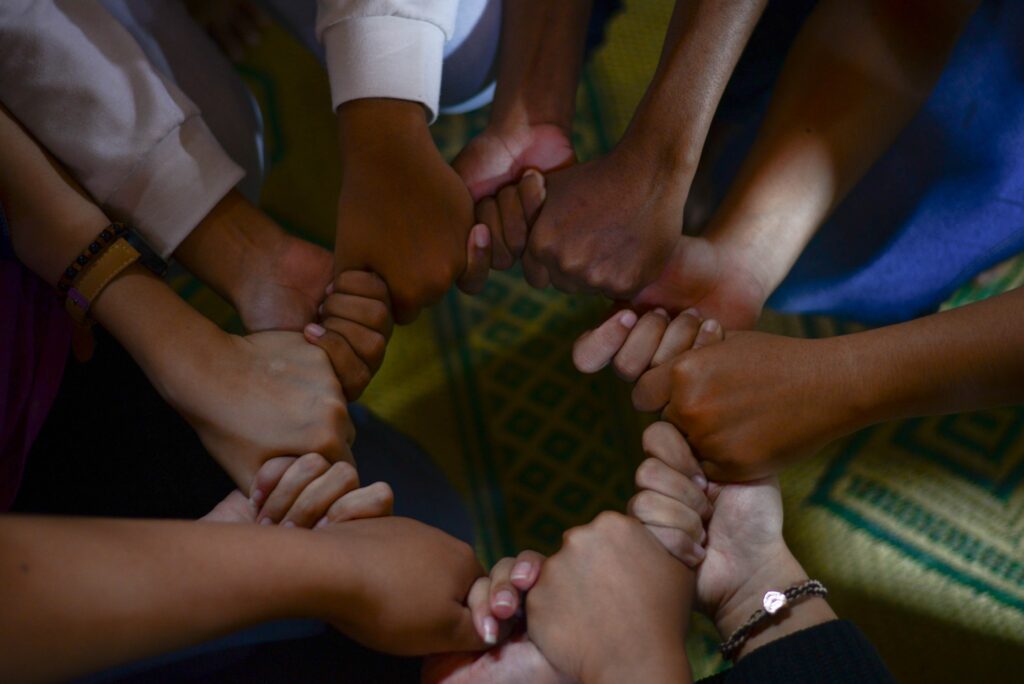
Part 1: Introduction | Part 2: Pictures
A picture of our union with Christ that illustrates the concept richly—and, I suppose is for that reason the most often-repeated metaphor of the concept—is that of a head and a body.
Paul particularly likes this image. He builds his key ecclesiological work, Ephesians, around it; from the very beginning, he climaxes his description of “all [the] spiritual blessings” (Ep 1.3) God has bestowed on his people with the observation that since Christ has been resurrected and exalted at the right hand of the Father (Ep 1.20-21), he is now the head of the church, which is his body (Ep 1.22-23).
He develops the concept in the next chapter by noting that in our conversion we are raised together with Christ (Ep 2.5-6). He addresses this specifically (though not, as the larger context makes clear, exclusively) to the Gentiles in the Ephesian church (Ep 2.11), exclaiming with wonder in his voice that the formerly alien peoples are now united with believers from God’s longtime chosen people, Israel (Ep 2.12-18). The partition in the Temple courtyard that had excluded Gentiles at the threat of immediate execution was now—spiritually, at least—demolished, and would be physically demolished in just a decade.
This is the first and most obvious teaching of this metaphor: if diverse peoples are all “in Christ,” then they are one with one another as well, despite their apparently insurmountable differences. Paul notes that even the angels are driven to glorify God by the sight of erstwhile enemies—Jews and Gentiles—uniting in worship to God (Ep 3.10). As I often say to my students, “What does it take to astonish people who go to work in heaven every day?”
The metaphor has other implications. We have a firm foundation, and the resultant stability, because we are in Christ (Ep 2.20). We are holy—set apart, special—because we are in the ultimately holy One (Ep 2.21). We are a fit habitation for the Holy Spirit (Ep 2.22). We have confident boldness in his presence (Ep 3.12; cf He 4.16). We have power (Ep 3.16). We have understanding (Ep 3.17-19). We bring him glory (Ep 3.21).
These are the facts. But Paul isn’t one to stop with just the facts. In the second half of his letter, he moves to the application, the response: if this is true, what should we do about it?
And here he gets meddlesome. It turns out that we can’t just sit back and enjoy our situation, our privileges, our blessings. With these privileges comes great responsibility.
As members of the body, we’re designed—and obligated—to work together.
Despite our differences.
As the angels have observed, that’s the whole point.
That’s how we bring him glory.
Since there’s one body (Ep 4.4), with diverse gifts (Ep 4.11), we need to work together, in concert, as a single organism, coordinated, graceful, mature, gainly. We need to grow up together so that the body is the right size for the head (Ep 4.13)—so that we’re rightly proportioned as a body with a perfect head.
Part of that is taking care of each other. When you get something in your eye, your finger recognizes that it is gifted to get foreign objects out of sensitive areas, and it springs into action to help out its fellow member—even though the foreign object isn’t causing the finger any discomfort whatsoever.
And so in the body of Christ we all exercise our gifts for the benefit of differently gifted members—and we accept their ministry in areas where we need help as well.
And we DO need the help.
Paul develops this metaphor further later in this epistle (Ep 5.30) and in other epistles, including one to the church the capital of the Empire (1Co 12.12-27; Ro 12.4-8). It’s a Big Idea.
And so, it turns out, we have work to do.
Part 4: Even More Pictures | Part 5: Outcomes | Part 6: More Outcomes | Part 7: Even More Outcomes | Part 8: And More | Part 9: Corollaries
Photo by Wylly Suhendra on Unsplash

Leave a reply. Keep it clean.